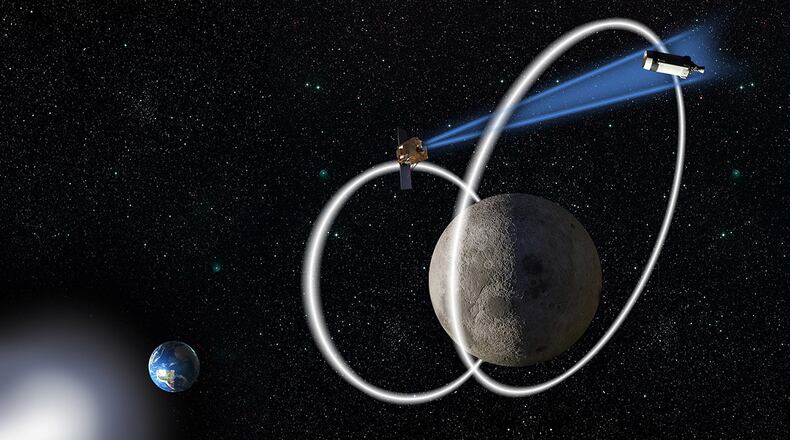Overseen by AFRL, which is headquartered at Wright-Patterson Air Force Base, the Joint Emergent Technology Supplying On-orbit Nuclear Power — dubbed “JETSON” — has dual tracks, Lt. Col. Tommy Nix, JETSON program manager, said in response to questions from the Dayton Daily News.
The High Power Mission Application awards to Lockheed Martin and Westinghouse Government Services are focused on spacecraft powered by nuclear fission — the process that results when a neutron slams into a larger atom, splitting it into two smaller atoms.
Meanwhile, the Low Power Application award to Intuitive Machines is focused on Radioisotope Power Systems (RPS) similar to the power supplies that drive the Curiosity and Perseverance rovers on Mars.
Readers may recall that the University of Dayton and L3Harris in Mason contributed to the Perserverance rover.
“Nuclear power from a fission or radioisotope source provides a higher power density than current space systems and has the potential to scale to power levels that provides flexibility in orbits, sensors, constellations, and mission scenarios that AFRL is interested in studying,” Nix told this news outlet. “In addition, the spacecraft design in order to support a fission or RPS based system will need technology maturation that has potential to influence traditional solar-powered spacecraft as well.”
AFRL’s goal is to establish the technical foundations and capabilities and develop reactor and propulsion systems that resolve what Nix called “the key technical challenges in areas such as reactor design, propulsion system, spacecraft subsystems and design” and other areas.
Advanced RPS systems offer capabilities that provide higher fuel efficiency, more energy and longer operational lifetime than existing RPS capabilities, he said.
These are the initial awards in the program, which will result in a preliminary design review, Nix said. Once that is complete, evaluation will determine the next steps.
“The purpose of AFRL’s research and development is always to discover, develop and demonstrate a capability,” he said.
AFRL is a national enterprise with nearly 12,000 employees. While the main focus of the program is within the Space Vehicles Directorate at Kirtland Air Force Base in New Mexico, Nix said there is potential involvement from multiple lab directorates at Wright-Patterson to include the Materials and Manufacturing Directorate and Sensors Directorate as the program matures and technical solutions/designs are produced.
About the Author


